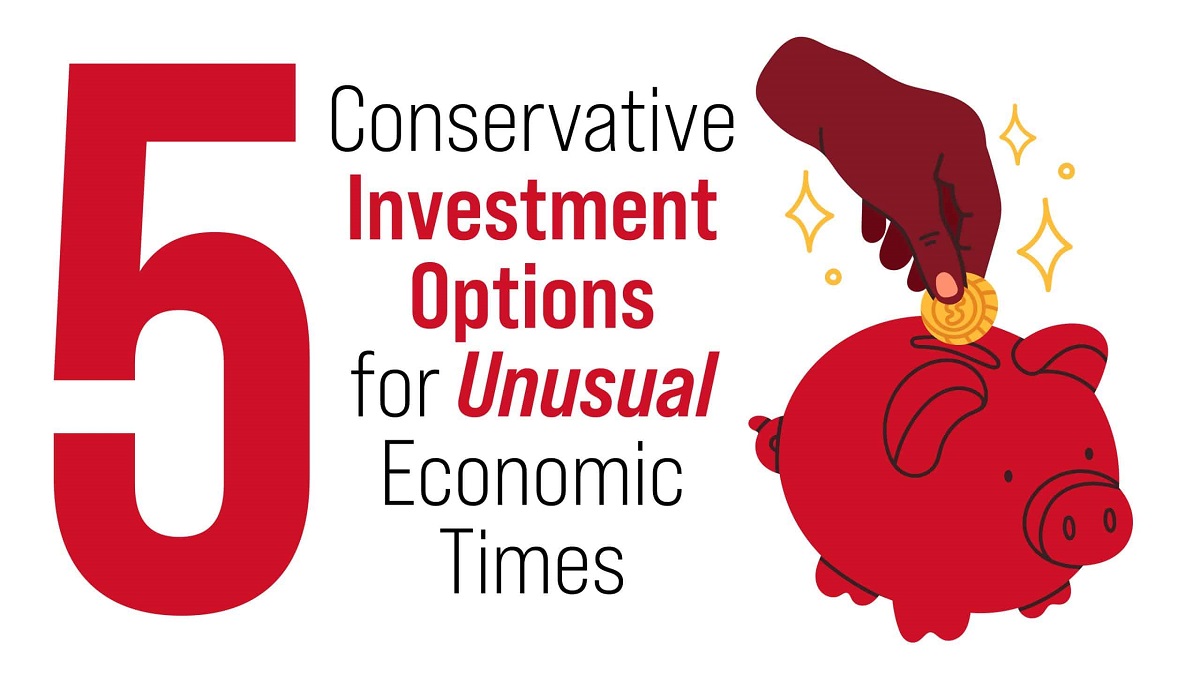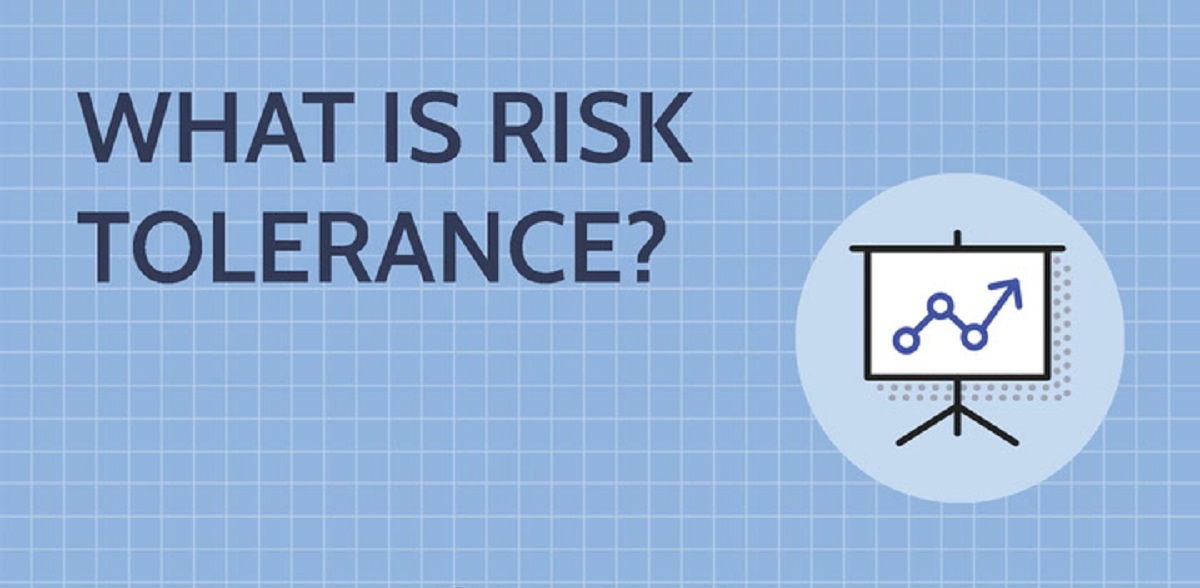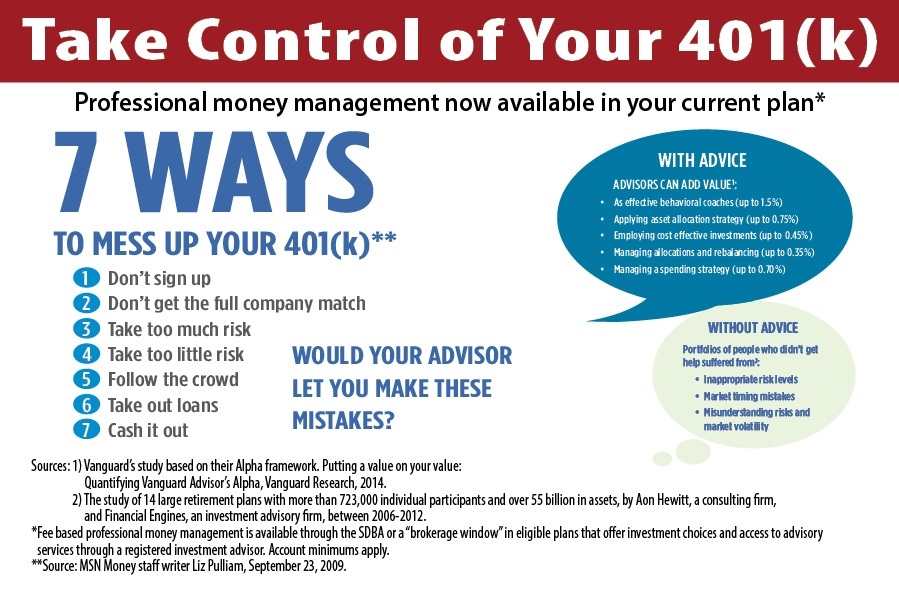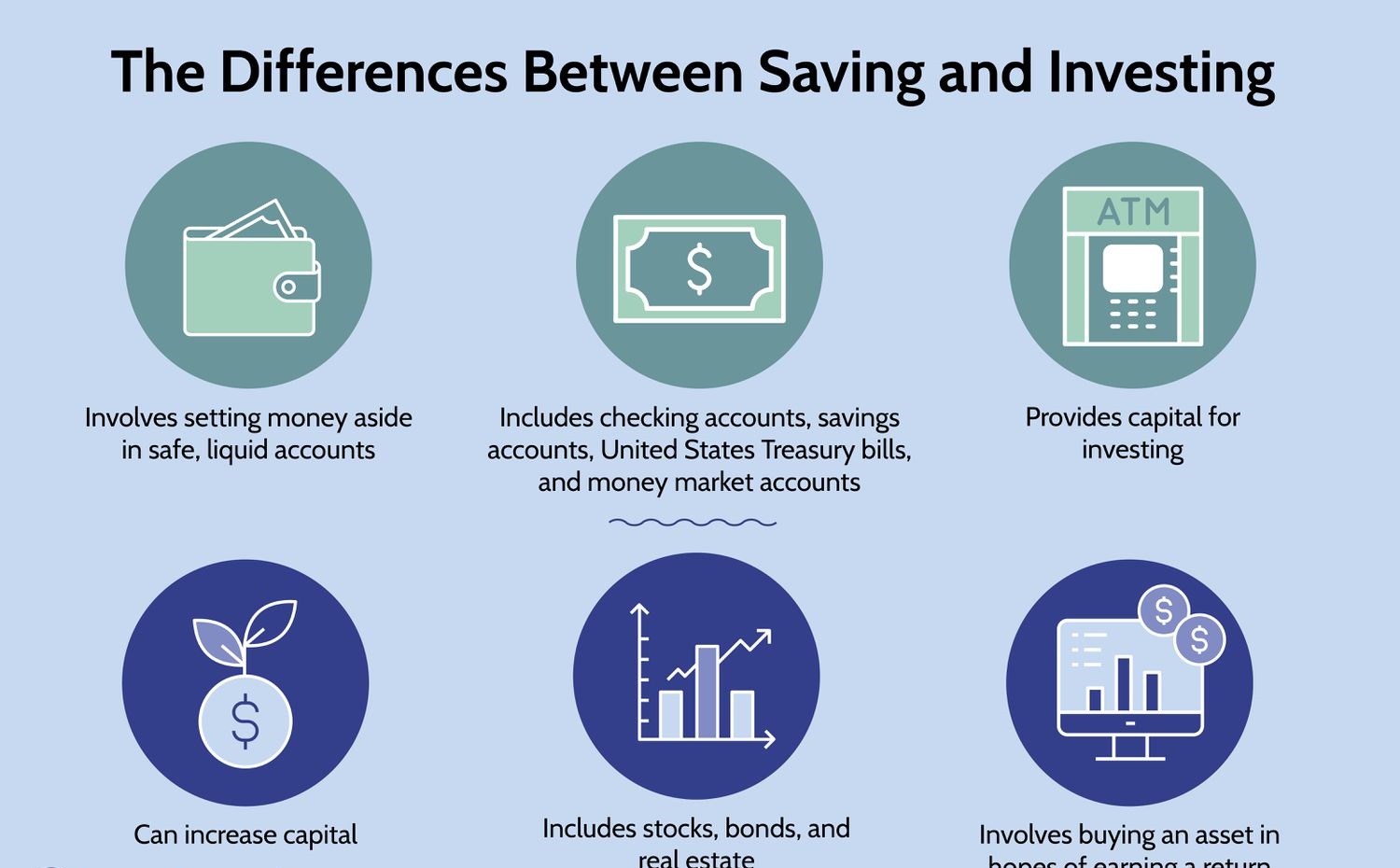Introduction
Welcome to our comprehensive guide on conservative investments. If you’re someone who prioritizes stability and minimizing risk when it comes to your investments, then understanding conservative investments is essential. In this article, we will explore the definition, characteristics, examples, as well as the pros and cons of conservative investments.
Investing is often associated with varying degrees of risk, with higher-risk investments offering the potential for greater returns but also a higher possibility of losses. On the other hand, conservative investments are designed to prioritize capital preservation and provide a more stable and predictable return on investment.
Whether you’re a novice investor looking to safeguard your initial capital or a seasoned investor aiming to diversify your portfolio, having a clear understanding of conservative investments is crucial. By opting for conservative investment strategies, you can minimize the impact of market downturns and better protect your investments.
In the upcoming sections, we will delve into the definition and characteristics of conservative investments. We will also provide examples of popular conservative investment options available to individuals. Additionally, we will outline the advantages and disadvantages of conservative investments to help you make informed decisions based on your financial goals and risk tolerance.
If you’re ready to explore the world of conservative investments and learn how they can play a valuable role in your investment portfolio, let’s begin by understanding their fundamental definition and key characteristics.
Definition of Conservative Investments
Conservative investments are financial instruments that are known for their low-risk nature and a primary focus on capital preservation. These types of investments are often favored by investors seeking stable returns over a long period of time, rather than chasing high-risk, high-reward opportunities.
Unlike aggressive or speculative investments, conservative investments typically provide a more predictable and steady income stream. They are designed to protect the invested capital, making them ideal for individuals who prioritize stability and have a lower risk tolerance.
Conservative investments are characterized by their relatively lower rates of return compared to riskier investment options. While they may not offer the potential for significant gains, they aim to offer consistent income or modest growth over time.
One of the key aspects of conservative investments is the presence of a lower level of volatility. These investments typically experience smaller price fluctuations compared to more aggressive investments, such as stocks or high-yield bonds. This stability helps shield investors from significant losses during market downturns.
Common types of conservative investments include cash savings, certificates of deposit (CDs), government bonds, municipal bonds, and high-quality corporate bonds. These assets are considered less exposed to market volatility, as they tend to have lower default risk and provide fixed income streams.
Conservative investments are often recommended for individuals nearing retirement or those who have a shorter investment horizon. This is because they offer a greater level of capital preservation, ensuring that the invested funds are less susceptible to significant fluctuations and market uncertainties.
It’s important to note that while conservative investments are generally considered low-risk, they are not completely risk-free. All investments carry some level of risk, and it’s essential to conduct thorough research and consult with a financial advisor before making any investment decisions.
In the next section, we will explore the characteristics that distinguish conservative investments from other investment options, providing you with a deeper understanding of their unique attributes.
Characteristics of Conservative Investments
Conservative investments possess several key characteristics that set them apart from more aggressive investment options. These features contribute to their lower risk profile and make them attractive to investors seeking stability and capital preservation. Let’s explore the main characteristics of conservative investments:
1. Low Risk: The primary characteristic of conservative investments is their low level of risk. These investments prioritize the preservation of capital rather than seeking high returns. They are typically less susceptible to the volatility of the market, providing a more stable investment environment.
2. Predictable Returns: Conservative investments offer a more predictable income stream compared to riskier options. The returns are often fixed or have a low variance, making it easier to forecast and plan for future earnings. This predictability is important for individuals who rely on steady income or have short-term financial goals.
3. Capital Preservation: One of the main objectives of conservative investments is to preserve the invested capital. While they may not generate substantial growth, they aim to safeguard the initial investment against significant losses. This feature is particularly valuable for investors who prioritize protecting their principal amount.
4. Diversification: Conservative investments can play a crucial role in diversifying an investment portfolio. By allocating a portion of capital to low-risk assets, investors can reduce overall portfolio volatility. This diversification strategy helps mitigate risk and provides a cushion against losses in riskier investments like stocks or commodities.
5. Lower Volatility: Conservative investments tend to experience lower levels of price fluctuation in comparison to more aggressive investment vehicles. They are less affected by market volatility and economic downturns, thus providing a greater level of stability during uncertain times. This lower volatility makes them suitable for risk-averse individuals or those with a shorter investment horizon.
6. Longer Investment Horizon: While conservative investments may not generate rapid returns, they are well-suited for long-term investment strategies. The emphasis on capital preservation and steady income makes them attractive for individuals with longer investment horizons, such as retirement planning. The power of compounding over time can help accumulate wealth steadily.
Understanding the key characteristics of conservative investments is crucial for investors looking to build a well-balanced and risk-managed portfolio. In the following section, we will provide examples of popular conservative investment options that can be incorporated into your investment strategy.
Examples of Conservative Investments
Conservative investments encompass a diverse range of financial instruments that prioritize stability and capital preservation. These investment options offer lower risk profiles and predictable returns. Let’s explore some of the most common examples of conservative investments:
1. Cash Savings: Cash savings, such as savings accounts or money market accounts, are considered one of the safest conservative investments. They offer low returns but provide high liquidity and easy access to funds. Cash savings are suitable for individuals who prioritize capital preservation and prefer to have their money readily available for emergencies or short-term needs.
2. Certificates of Deposit (CDs): CDs are time deposits offered by banks and credit unions. They provide a fixed rate of interest over a specified period of time, ranging from a few months to several years. CDs are known for their low risk and predictable returns. The longer the term, the higher the interest rate offered. They are ideal for risk-averse investors looking to earn a higher yield compared to traditional savings accounts.
3. Government Bonds: Government bonds, including US Treasury bonds, are considered ultra-safe conservative investments. These bonds are issued by governments to raise capital and typically offer fixed interest payments over a specified period. They are backed by the full faith and credit of the government, making them virtually risk-free. Government bonds are renowned for their stability and are often used as a benchmark for measuring risk in other investments.
4. Municipal Bonds: Municipal bonds are issued by state or local governments to fund public projects such as infrastructure development or schools. These bonds offer tax advantages and provide a regular stream of income through interest payments. Municipal bonds are considered relatively safe, especially when issued by financially stable governments or municipalities with strong credit ratings.
5. High-Quality Corporate Bonds: Corporate bonds are debt instruments issued by corporations to raise capital. High-quality corporate bonds are issued by financially secure and reputable companies with a strong creditworthiness. These bonds provide fixed interest payments and are considered less risky compared to lower-grade corporate bonds. They offer a balance between safety and moderate returns.
6. Dividend-Paying Stocks: While stocks are generally considered riskier investments, dividend-paying stocks of established companies can be a conservative investment option. Dividend payments provide a consistent income stream. However, it is important to carefully research the company’s financial health and dividend history to ensure stability and sustainability of the dividend payments.
These examples represent a range of conservative investment options available to investors. It’s important to note that the specific characteristics and risks associated with each investment may vary. Consider consulting with a financial advisor to determine the most suitable conservative investment options based on your financial goals, risk tolerance, and investment horizon.
In the next section, we will examine the pros and cons of conservative investments to help you make informed investment decisions.
Pros and Cons of Conservative Investments
Conservative investments offer distinct advantages and disadvantages that investors should carefully consider before making investment decisions. Let’s explore the pros and cons of conservative investments:
Pros:
- Capital Preservation: The primary advantage of conservative investments is the focus on capital preservation. These investments aim to protect the initial investment and minimize the risk of significant losses, making them suitable for risk-averse individuals and those with a shorter investment horizon.
- Steady Income: Conservative investments often provide a regular and predictable income stream. This can be beneficial for individuals who rely on investment income to cover living expenses or those looking for a stable cash flow.
- Lower Volatility: Conservative investments tend to experience lower levels of volatility compared to riskier investment options. This can provide a sense of stability and reduce the emotional stress associated with market fluctuations.
- Diversification: Incorporating conservative investments into a diversified portfolio can help mitigate overall risk. These investments act as a counterbalance to more aggressive and volatile assets, providing a cushion during market downturns.
- Less Investment Expertise Required: Conservative investments often require less active monitoring and investment expertise compared to riskier assets such as individual stocks. This makes them accessible to a broader range of investors, including those who may not have extensive investment knowledge.
Cons:
- Lower Returns: One of the trade-offs with conservative investments is the potential for lower returns compared to riskier options. While they prioritize capital preservation, conservative investments may not generate significant growth or high yields.
- Inflation Risk: Conservative investments, especially those with fixed interest rates, may not keep pace with inflation. This means that over time, the purchasing power of the investment may erode if the rate of return does not outpace inflation.
- Opportunity Cost: By choosing conservative investments, investors may miss out on potential higher returns offered by riskier assets during periods of market growth. It’s important to strike a balance between risk and return based on individual investment goals and risk tolerance.
- Dependency on Interest Rates: Some conservative investments, such as bonds, are sensitive to changes in interest rates. A rise in interest rates can lead to a decrease in bond values, potentially resulting in capital losses for bondholders.
- Limited Growth Potential: While conservative investments provide stability, they may not offer significant growth opportunities. This can be a disadvantage for investors who seek substantial capital appreciation and are willing to tolerate higher levels of risk.
By carefully weighing the pros and cons, investors can determine whether conservative investments align with their financial goals and risk tolerance. It’s important to maintain a well-balanced investment portfolio that reflects individual circumstances and long-term objectives.
In the final section, we will provide some tips to consider when investing in conservative investments to maximize their potential benefits.
Tips for Investing in Conservative Investments
Investing in conservative investments requires careful consideration and strategic planning. Here are some important tips to keep in mind to make the most of your conservative investment strategy:
1. Define Your Financial Goals: Clearly define your financial goals and investment objectives. Are you investing for short-term liquidity needs, long-term retirement planning, or a combination of both? Understanding your goals will help you select the most appropriate conservative investment options.
2. Assess Your Risk Tolerance: Evaluate your risk tolerance level to determine the percentage of your portfolio that should be allocated to conservative investments. Consider factors such as your age, investment experience, time horizon, and comfort level with risk.
3. Diversify Your Portfolio: Diversification is key to mitigating risk. Allocate your investment capital across various conservative investments to reduce exposure to any single asset. This helps spread risk and provides a safety net in case one investment underperforms.
4. Research and Due Diligence: Conduct thorough research on the conservative investments you are considering. Understand the specific characteristics, historical performance, and risk factors associated with each investment option. This will enable you to make informed decisions and choose investments that align with your goals.
5. Consider Professional Advice: Seek professional advice from a financial advisor who specializes in conservative investments. They can provide personalized guidance based on your individual circumstances and help create a tailored investment strategy.
6. Review and Monitor Regularly: Regularly review your conservative investments to ensure they continue to align with your goals and risk tolerance. Monitor economic developments and market conditions that may impact the performance of your investments. Make adjustments as necessary to maintain a well-balanced portfolio.
7. Stay Informed: Stay updated on financial news, economic trends, and changes in interest rates that can impact conservative investments. This knowledge will help you make informed decisions and adapt your investment strategy accordingly.
8. Reinvest Interest and Dividends: Reinvesting interest from bonds or dividends from dividend-paying stocks can help enhance the overall return of your conservative investment portfolio. This allows your investments to compound over time and potentially increase your income.
9. Regularly Review Your Investment Goals: As your financial situation and goals may evolve over time, periodically reassess your investment goals and adjust your conservative investment strategy accordingly. This will help ensure that your investments continue to align with your changing needs.
10. Stay Patient: Conservative investments are typically focused on long-term stability and income generation. It’s important to maintain a patient and disciplined approach, not expecting rapid growth or high returns. Keep in mind that the primary objective is capital preservation.
By following these tips, you can maximize the benefits of conservative investments while minimizing potential risks. Remember, every investment decision should be made based on your individual circumstances, financial goals, and risk tolerance.
Conclusion
In conclusion, conservative investments play a crucial role in investment portfolios by prioritizing stability, capital preservation, and predictable returns. These investments offer several advantages, including a focus on capital preservation, steady income streams, lower volatility, diversification benefits, and accessibility for a wide range of investors.
On the flip side, conservative investments come with trade-offs. They generally offer lower returns compared to riskier investments, may not keep pace with inflation, and limit growth potential. It’s important to carefully assess your financial goals, risk tolerance, and time horizon when considering conservative investments.
When investing in conservative investments, it is vital to define your financial goals, assess your risk tolerance, diversify your portfolio, conduct thorough research, and potentially seek professional advice. Regularly reviewing your investments, staying informed about market trends, and adjusting your strategy as needed are also essential for optimizing returns and managing risk.
Remember that conservative investments are not devoid of risk, and it’s crucial to understand the specific characteristics, risks, and potential rewards associated with each investment option. Making informed decisions based on thorough research and professional advice can help you navigate the world of conservative investments with confidence.
As with any investment strategy, it’s important to regularly review your goals, reassess your investment strategy, and make necessary adjustments to ensure that your conservative investments continue to align with your evolving financial situation and aspirations.
Ultimately, striking a balance between risk and return and maintaining a well-diversified portfolio that includes conservative investments can help you achieve your financial objectives while safeguarding your hard-earned capital.

























